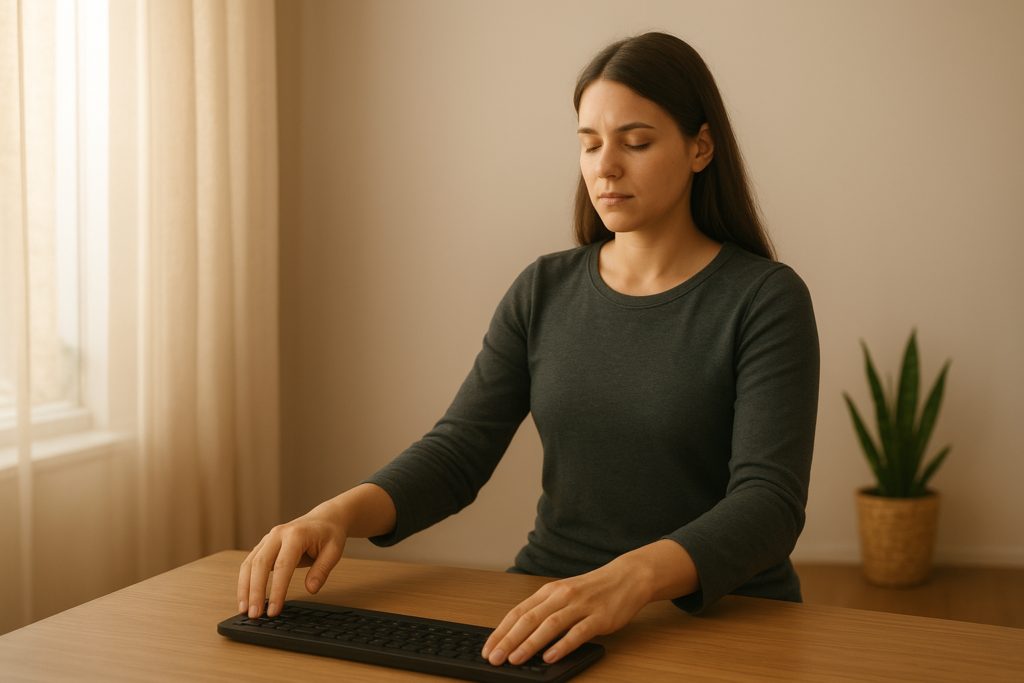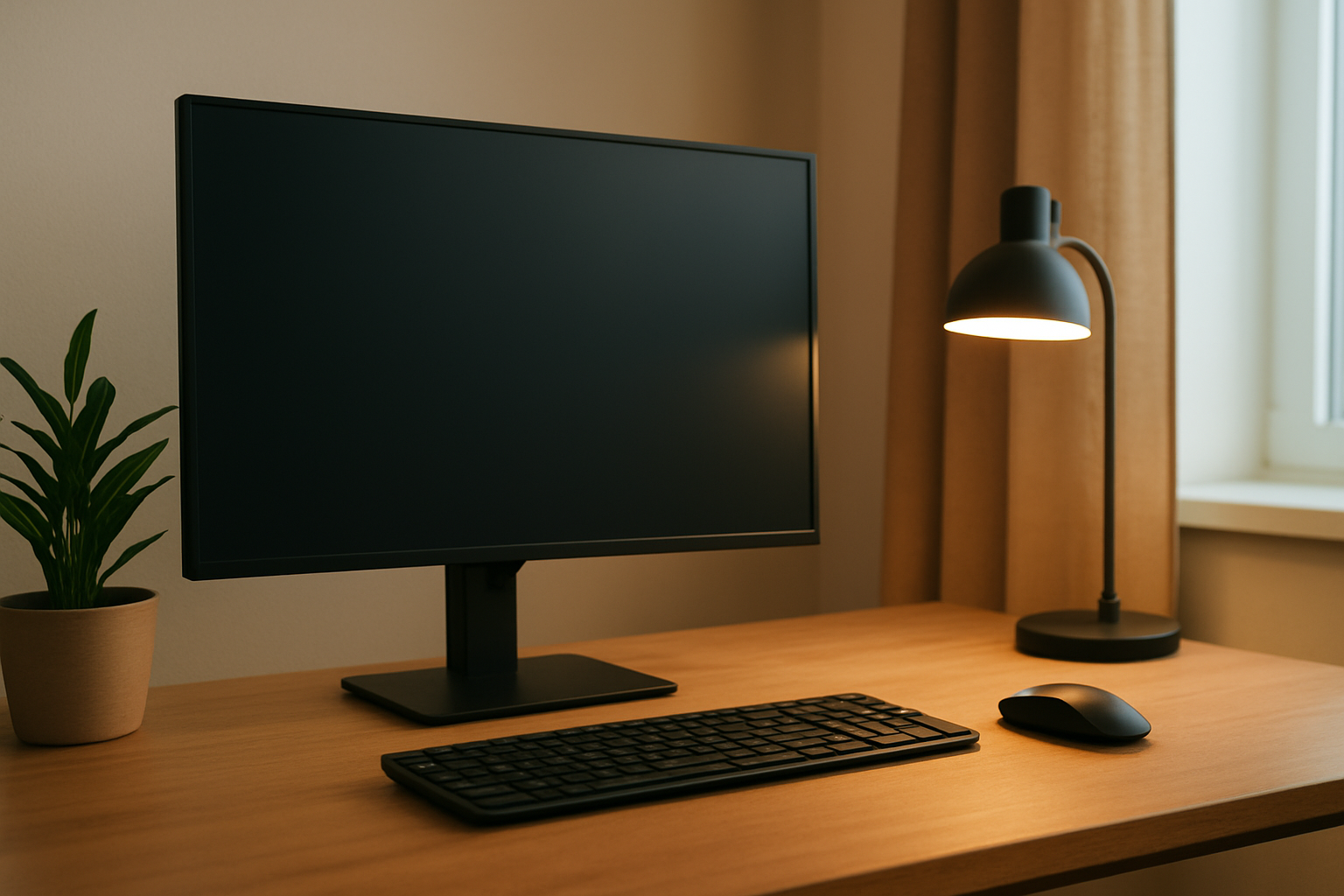Introduction
In today’s digital age, most people spend hours in front of screens—whether it’s for work, studying, or leisure. While technology makes our lives easier, it also comes with its downsides. One of the most common issues faced by office workers, students, and professionals is Digital Eye Strain (DES), also known as Computer Vision Syndrome (CVS).
Symptoms of digital eye strain include blurred vision, headaches, dry eyes, neck and shoulder pain, and difficulty focusing. The good news? By setting up your workspace correctly, you can dramatically reduce the risk of eye strain and protect your vision for the long term.
This guide provides a complete, step-by-step approach to designing an eye-friendly workspace. We’ll cover everything from monitor placement and lighting to ergonomic adjustments, screen settings, and healthy habits.
1. The Science Behind Digital Eye Strain
Before diving into solutions, it’s important to understand what causes digital eye strain.
- Reduced Blink Rate: People normally blink about 15–20 times per minute, but when using a screen, that number drops to 5–7 times per minute. This leads to dry eyes.
- Blue Light Exposure: Screens emit high-energy visible (HEV) blue light, which can cause glare, disrupt sleep cycles, and potentially contribute to retinal stress.
- Poor Ergonomics: Incorrect monitor height or distance causes not only eye strain but also neck and back pain.
- Unoptimized Lighting: Harsh lighting, glare from windows, or dim environments make your eyes work harder to focus.
By optimizing your workspace, you can address each of these problems.
2. Ideal Monitor Setup for Eye Comfort
Monitor Position
- Distance: Place your screen 20–28 inches (50–70 cm) away from your eyes.
- Height: The top of the monitor should be at or slightly below eye level. This prevents strain from looking too high or too low.
- Angle: Tilt the screen slightly backward (10–20 degrees) to maintain a comfortable viewing angle.
Screen Size & Resolution
- Use a larger monitor (24” or more) if possible. Small screens force your eyes to squint.
- Ensure high resolution (Full HD or higher) for sharp text and images.
Dual Monitor Setup
If you use two monitors:
- Keep them at the same height.
- Use the primary monitor directly in front of you.
3. Optimize Lighting and Reduce Glare
Lighting is one of the most overlooked yet crucial aspects of eye health.
- Avoid Direct Glare: Position your monitor so windows are to the side instead of directly in front or behind.
- Use Soft, Indirect Lighting: Replace harsh overhead lights with desk lamps or LED diffused lights.
- Anti-Glare Screen Protectors: A matte screen filter can reduce reflections.
- Adjust Screen Brightness: Match the brightness of your screen to the room’s lighting. If your screen is a light source in a dark room, it will strain your eyes.
4. Adjusting Screen Settings for Eye Protection
Most people leave their monitor at factory settings, which are rarely eye-friendly.
- Brightness: Set it to about the same level as your surroundings.
- Contrast: Increase contrast slightly for sharper text.
- Text Size & Color: Choose larger fonts and high-contrast colors (dark text on a light background works best).
- Blue Light Filters: Use built-in settings like Night Shift (Mac), Night Light (Windows), or F.lux to reduce blue light exposure.
- Refresh Rate: A higher refresh rate (75 Hz or more) reduces flicker and eye fatigue.
5. Ergonomic Workspace Setup
Eye health is directly linked to posture and ergonomics.
- Chair: Use an adjustable chair that supports your back.
- Desk Height: Keep your elbows bent at 90–100 degrees when typing.
- Keyboard & Mouse: Place them at a comfortable distance to avoid leaning forward.
- Screen Alignment: Keep your monitor directly in front of you to avoid twisting your neck.

6. The 20-20-20 Rule
One of the simplest yet most effective methods to reduce digital eye strain is the 20-20-20 rule:
- Every 20 minutes, look at an object at least 20 feet away for 20 seconds.
This allows your eyes to relax and reduces fatigue from prolonged near-focus.
7. Incorporating Breaks and Eye Exercises
Breaks
- Take a 5–10 minute break every hour. Stand up, stretch, and walk around.
- Avoid using your phone during breaks, as it continues the strain.
Eye Exercises
- Blinking Exercises: Consciously blink every few seconds to keep eyes moist.
- Palming: Rub your hands together and place them gently over your closed eyes for relaxation.
- Focus Change: Alternate focus between a nearby object and something far away.
8. Hydration and Humidity for Eye Health
- Stay Hydrated: Drink enough water throughout the day to prevent dry eyes.
- Use a Humidifier: If you work in an air-conditioned environment, a humidifier helps maintain moisture in the air.
- Artificial Tears: Consider preservative-free lubricating drops if your eyes feel dry.
9. The Role of Computer Glasses
Specialized blue light–blocking glasses or prescription computer glasses can reduce strain.
- Blue Light Lenses: Filter harmful wavelengths to minimize glare and improve comfort.
- Anti-Reflective Coating: Reduces reflections from screens and lighting.
- Prescription Adjustment: If you wear glasses, ask your optometrist about computer-specific lenses.
10. Long-Term Eye Health Habits
Preventing eye strain goes beyond workspace setup. Adopt these habits:
- Regular Eye Exams: Adults should get eye exams every 1–2 years, or more often if at risk.
- Healthy Diet: Eat foods rich in Vitamin A, C, E, lutein, and omega-3s.
- Sleep Well: Poor sleep reduces tear production and increases fatigue.
- Limit Screen Time: Outside of work, try to reduce unnecessary screen exposure.
Conclusion
Digital eye strain is not just a temporary nuisance—it can have lasting effects on your vision and overall health if ignored. Fortunately, by making small but powerful changes to your workspace—such as optimizing monitor height, reducing glare, adjusting screen settings, and adopting healthy habits—you can protect your eyes and improve your productivity.
Taking care of your eyes today means enjoying clearer, more comfortable vision tomorrow.
🛒 Product Recommendations
- Blue Light Blocking Glasses – Reduce strain during long hours of screen use.
👉 Check Price - Adjustable Laptop/Monitor Stand – Keeps your screen at eye level for better ergonomics.
👉 Shop Now - Ergonomic Office Chair with Lumbar Support – Supports posture and reduces fatigue.
👉 View Details - LED Desk Lamp with Dimmable & Eye-Care Features – Provides the right lighting without glare.
👉 Order Here - Humidifier for Home Office – Helps maintain eye hydration during long screen sessions.
👉 Buy Now - Artificial Tears (Preservative-Free) – Quick relief for dryness from digital strain.
👉 Check Product



